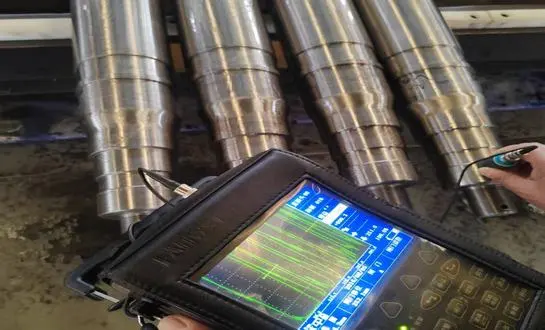How forged shafts perform in Arctic and desert conditions
Arctic Resilience: Combating Extreme Cold
In the unforgiving Arctic climate, machinery must withstand temperatures that can plummet to -40°C or lower. Forged shafts excel in these conditions due to their superior grain structure and density. The forging process aligns the metal's grain flow, enhancing its strength and reducing the risk of brittleness in extreme cold.
Furthermore, the improved molecular structure of forged shafts minimizes the risk of thermal shock, a common issue when equipment transitions between extreme temperature differentials. This resilience is crucial for maintaining operational integrity in Arctic oil drilling operations, where equipment downtime can lead to substantial financial losses.
Desert Durability: Withstanding Heat and Abrasion
On the opposite end of the spectrum, desert environments present their own set of challenges. High temperatures, coupled with abrasive sand and dust, can wreak havoc on machinery. Forged shafts demonstrate exceptional heat resistance, maintaining their structural integrity even under prolonged exposure to scorching temperatures.
The dense, uniform structure of forged shafts also provides superior resistance to abrasion. This is particularly beneficial in desert mining operations, where sand and dust particles can accelerate wear on machinery components. The enhanced surface hardness of forged shafts significantly extends their operational lifespan in these abrasive conditions.
Temperature Fluctuation Resistance
Both Arctic and desert environments are notorious for extreme temperature fluctuations between day and night. Forged shafts exhibit remarkable dimensional stability across a wide temperature range. This stability is crucial for maintaining precise tolerances in machinery, ensuring consistent performance regardless of temperature variations.
The shaft forging process imparts a level of ductility that allows the shaft to absorb thermal stresses without compromising its structural integrity. This characteristic is invaluable in environments where rapid temperature changes are the norm, preventing premature failure due to thermal fatigue.
Saltwater exposure: Why marine shafts must be forged
Corrosion Resistance in Marine Environments
Marine environments present one of the most corrosive settings for industrial equipment. Saltwater, with its high chloride content, is notoriously aggressive towards metals. Forged shafts, particularly those made from corrosion-resistant alloys, offer superior protection against this harsh environment.
The forging process creates a denser, more uniform microstructure that significantly reduces the potential for corrosion initiation. This enhanced resistance is crucial for components used in offshore drilling rigs, marine propulsion systems, and coastal industrial facilities. The improved corrosion resistance translates to longer service life and reduced maintenance requirements, which is particularly valuable in hard-to-access offshore locations.
Strength Retention in Saltwater
Beyond corrosion resistance, forged shafts maintain their mechanical properties better than their cast or machined counterparts when exposed to saltwater. The aligned grain structure resulting from the forging process helps prevent the ingress of corrosive elements into the metal's core, preserving its strength and integrity over time.
This strength retention is critical in applications such as marine propeller shafts, where constant exposure to saltwater combines with high mechanical stresses. Forged shafts can maintain their performance characteristics for extended periods, ensuring reliable operation in these demanding conditions.
Fatigue Resistance in Marine Applications
Marine equipment often faces cyclic loading due to wave action and varying operational demands. Forged shafts exhibit superior fatigue resistance compared to other manufacturing methods. The forging process eliminates internal voids and discontinuities that can serve as initiation points for fatigue cracks.
This enhanced fatigue resistance is particularly valuable in applications like offshore crane shafts or marine winch components, where repeated stress cycles are the norm. The ability to withstand these cyclic loads without premature failure significantly enhances the reliability and safety of marine operations.
Impact Resistance Benefits of Forged Shafts for Offshore & Mining Applications
Enhanced Toughness in High-Impact Environments
Offshore and mining operations subject equipment to severe impact loads, often in unpredictable patterns. Forged shafts excel in these environments due to their superior toughness and impact resistance. The shaft forging process refines the metal's grain structure, creating a more uniform and dense material that can absorb and distribute impact energy more effectively.
This enhanced toughness is crucial in applications such as drill shafts in rock drilling operations or components in ore crushing machinery. Forged shafts can withstand sudden, high-energy impacts without cracking or deforming, ensuring continuous operation in these demanding environments.
Structural Integrity Under Shock Loads
In both offshore and mining applications, equipment often faces unexpected shock loads. These can result from factors such as sudden changes in drilling conditions or the handling of large, irregular ore pieces. Forged shafts maintain their structural integrity under these shock loads better than components manufactured through other methods.
The aligned grain structure of forged shafts distributes stress more evenly throughout the component. This characteristic prevents stress concentration points that could lead to premature failure under shock loads. As a result, forged shafts provide a higher level of reliability and safety in applications where unexpected loads are a frequent occurrence.
Resistance to Deformation and Fracture
The combination of high strength and toughness in forged shafts results in superior resistance to deformation and fracture. This is particularly beneficial in mining applications where shafts may be subjected to twisting forces or bending moments under load.
Forged shafts maintain their dimensional stability even under severe loading conditions, ensuring that equipment continues to operate within specified tolerances. This resistance to deformation is crucial for maintaining alignment in complex machinery, preventing secondary failures that could result from misaligned components.
What Makes Forged Shafts Ideal for High-Vibration, Heavy-Load Environments?
Vibration Damping Characteristics
High-vibration environments, common in industrial settings, can lead to accelerated wear and fatigue failure in machinery components. Forged shafts exhibit superior vibration damping characteristics compared to shafts produced by other methods. The uniform, dense structure of forged metal absorbs and dissipates vibrational energy more effectively.
This vibration damping quality is particularly valuable in applications such as turbine shafts or large industrial pump shafts, where continuous high-speed rotation can generate significant vibrations. The ability of forged shafts to mitigate these vibrations leads to smoother operation, reduced wear on bearings and seals, and ultimately, a longer operational lifespan for the entire machine.
Load Bearing Capacity
In heavy-load environments, the strength and structural integrity of shafts become critical factors. Forged shafts offer superior load-bearing capacity due to their refined grain structure and absence of internal defects. The forging process aligns the metal's grain flow with the direction of major stresses, significantly enhancing its ability to withstand high loads.
This enhanced load-bearing capacity is essential in applications such as large gearbox shafts in industrial machinery or main shafts in heavy-duty cranes. Forged shafts can handle higher torque and axial loads without yielding, providing a higher safety margin and allowing for more compact, efficient machine designs.
Thermal Stability Under Load
High-load environments often coincide with elevated operating temperatures. Forged shafts maintain their mechanical properties better than cast or machined shafts at higher temperatures. The forging process creates a more homogeneous material structure that resists softening and deformation under combined thermal and mechanical stresses.
This thermal stability is crucial in applications like shafts in high-temperature processing equipment or in power transmission systems where friction can generate significant heat. The ability of forged shafts to maintain their strength and dimensional stability at elevated temperatures ensures reliable operation and extended service life in these demanding conditions.
Fatigue life of forged shafts under cyclic loading
Enhanced Endurance Limits
One of the most significant advantages of forged shafts is their superior fatigue life under cyclic loading conditions. The shaft forgingprocess significantly improves the metal's endurance limit - the stress level below which the material can theoretically endure an infinite number of load cycles without failure.
This enhanced fatigue resistance is due to the elimination of internal defects and the creation of a more uniform, fine-grained structure during forging. In applications where shafts are subjected to millions of load cycles, such as in wind turbine drivetrains or high-speed compressor shafts, this improved fatigue life translates to significantly longer operational periods between maintenance or replacement.
Resistance to Crack Initiation and Propagation
Forged shafts demonstrate superior resistance to both the initiation and propagation of fatigue cracks. The dense, uniform structure of forged metal provides fewer potential sites for crack initiation. Additionally, the aligned grain structure created by forging presents a more tortuous path for crack propagation, slowing the growth of any cracks that do form.
This resistance to fatigue crack growth is particularly valuable in critical applications where sudden failure could have catastrophic consequences. For instance, in aerospace applications or in large industrial turbines, the use of forged shafts provides an additional layer of safety and reliability.
Performance Under Variable Loading Conditions
Real-world applications often subject shafts to variable loading conditions rather than constant amplitude cyclic loads. Forged shafts excel in these variable loading scenarios due to their superior microstructure and mechanical properties. The forging process imparts a level of ductility and toughness that allows the material to better absorb and distribute stress under changing load conditions.
This adaptability to variable loading is crucial in applications like marine propulsion systems, where changing sea conditions result in fluctuating loads on propeller shafts. The ability of forged shafts to withstand these varying stresses without accumulating fatigue damage ensures reliable performance and extended service life in such dynamic environments.
In conclusion, the benefits of shaft forging for extreme environmental durability are clear and significant. From Arctic resilience to corrosion resistance in marine settings, from impact resistance in mining to fatigue life under cyclic loading, forged shafts consistently outperform alternatives in the most demanding conditions. For industries where reliability and durability are paramount, choosing forged shafts is not just a preference – it's a necessity for optimal performance and longevity.
If you're looking for high-quality forged shafts that can withstand the most extreme environmental conditions, look no further than Welong. With our expertise in shaft forging and commitment to quality, we can provide solutions tailored to your specific needs. Contact us at oiltools15@welongpost.com to learn more about how our forged shafts can enhance the durability and performance of your equipment in challenging environments.





